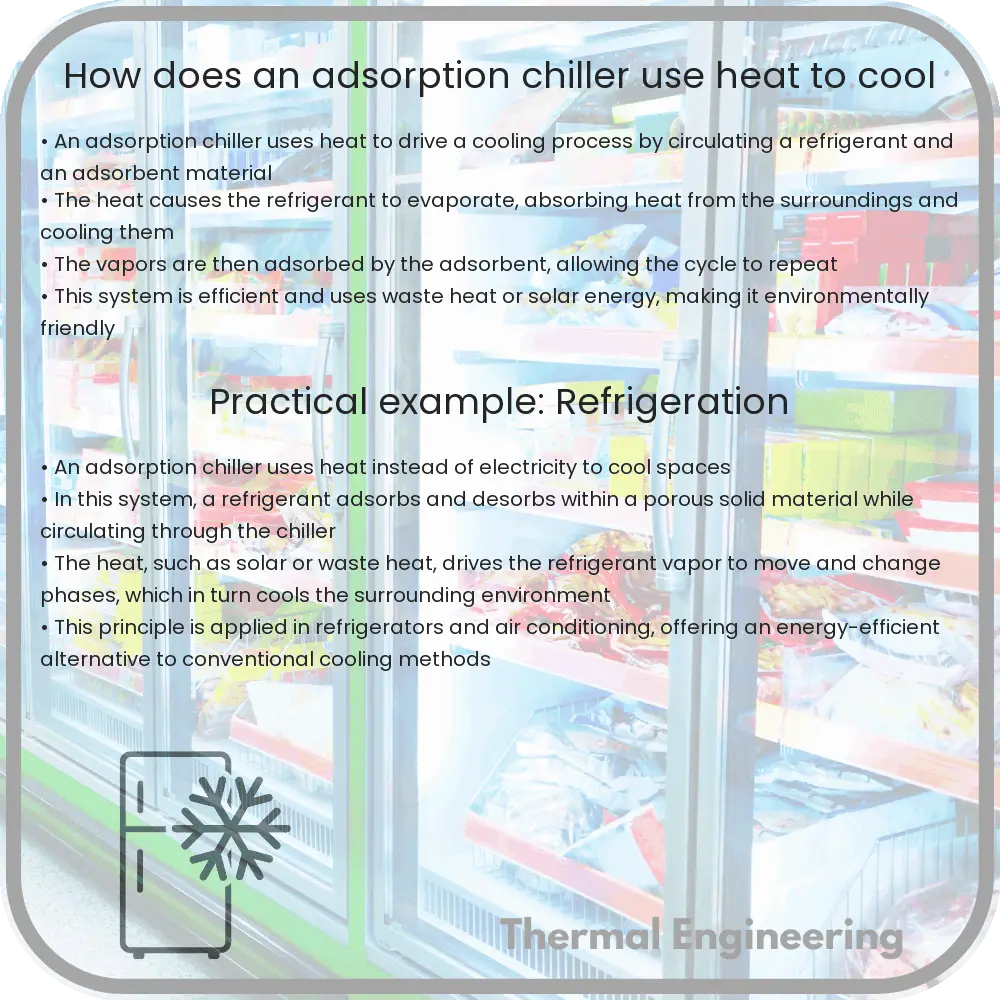Learn how adsorption chillers use heat sources like solar or waste heat to provide eco-friendly and efficient cooling solutions.

Understanding Adsorption Chillers: How Heat Can be Used to Cool
The concept of using heat to produce a cooling effect might initially sound counterintuitive, but adsorption chillers leverage this unique process to provide efficient air conditioning and refrigeration without relying heavily on electricity. This process is not only fascinating from a scientific standpoint but also offers significant environmental benefits. Let’s delve into how adsorption chillers work and explore their applications in today’s engineering world.
What is an Adsorption Chiller?
An adsorption chiller is a type of refrigeration system that uses a heat source to generate cooling. Unlike traditional vapor-compression chillers that require mechanical energy to operate compressors, adsorption chillers use thermal energy. This can be sourced from solar heat, waste heat from industrial processes, or even natural gas.
The Basic Components
- Adsorbent Material: Commonly silica gel or zeolites, which have a high capacity to attract and hold water molecules.
- Evaporator: Where the refrigerant (typically water) evaporates, pulling heat from the surroundings, thus causing cooling.
- Condenser: Cools down and condenses the refrigerant vapor back into liquid form.
- Generator: Where heat is applied to the refrigerant, causing it to vaporize and start the cycle.
How Does It Work?
The operation of an adsorption chiller can be broken down into a few key steps:
- Adsorption: At the beginning of the cycle, the adsorbent material is dry and has a high affinity for the refrigerant vapor. As the refrigerant evaporates in the evaporator, it is absorbed by the adsorbent material in what is known as the adsorber.
- Generation: Heat is then applied to the adsorber, which causes the refrigerant to desorb (or detach) from the adsorbent material and vaporize. This step requires a heat input, which might come from solar heat, waste heat, or another source.
- Condensation: The refrigerant vapor, now at a high pressure due to the heat, travels to the condenser where it releases its heat and changes back into a liquid.
- Evaporation: This liquid refrigerant then flows back to the evaporator, where it once again absorbs heat from the surroundings and evaporates, thus reducing the temperature and providing a cooling effect.
After desorption, the cycle repeats, relying primarily on the heat input at the generation phase for continued operation.
Why Use an Adsorption Chiller?
Adsorption chillers offer several distinct advantages:
- Eco-friendly: They can dramatically lower electricity consumption, primarily when the heat source is waste heat or solar energy. This makes them an attractive option for sustainable building projects and industrial applications.
- Efficient use of waste heat: Industries that generate a large amount of waste heat can use adsorption chillers to turn this otherwise wasted resource into something valuable—cooling.
- Low maintenance: With fewer moving parts compared to conventional chillers, adsorption chillers generally have lower maintenance requirements and longer life spans.
Real-World Applications
Adsorption chillers are utilized across various sectors. In industries, they are used to provide comfort cooling or process chilling using waste heat from processes or power generation equipment. In renewable energy projects, they are often paired with solar thermal collectors to cool buildings without using conventional, power-hungry air conditioners. This application can be particularly appealing in remote or off-grid areas where electricity is scarce or expensive.
In conclusion, adsorption chillers exemplify an innovative application of thermodynamic principles to solve practical engineering problems, offering an environmentally friendly and efficient solution for cooling using heat. By understanding and utilizing the adsorption refrigeration cycle, engineers can design systems that enhance energy efficiency and sustainability across a range of applications.